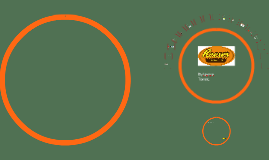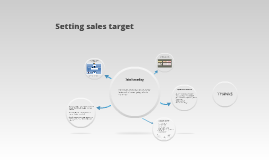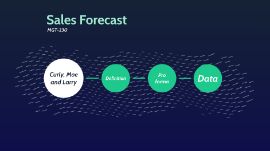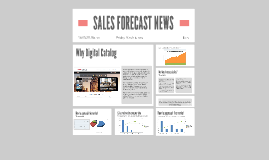Sales Forecast
Transcript: CRM Systems Specialized Forecasting Software Customer Relationship Management (CRM) systems, such as Salesforce, provide integrated sales forecasting capabilities. They analyze client interactions and sales data, allowing businesses to generate forecasts based on real-time customer insights and historical trends. Specialized forecasting tools like Tableau and SAS offer advanced analytics and machine learning capabilities. These platforms utilize sophisticated algorithms to provide more accurate predictions, enabling businesses to make informed strategic decisions. Excel for Sales Forecasting Sales Forecast Predicting Future Sales Trends and Strategies Excel is a widely used tool for sales forecasting due to its flexibility and ease of use. It allows users to model various scenarios, manipulate data, and create visual representations of trends, making it invaluable for small to medium-sized enterprises. Tools and Software for Forecasting Utilizing effective tools and software can significantly enhance the accuracy and efficiency of sales forecasting. From spreadsheets to advanced software solutions, the right tools offer valuable insights for decision-making. Summary of Key Points Importance of Sales Forecasting Sales forecasting is crucial for planning and budgeting, enabling businesses to anticipate future sales and make informed strategic decisions. Key methods include qualitative and quantitative approaches, each offering unique insights into potential market dynamics. Sales forecasting allows organizations to anticipate market demands and allocate resources efficiently. Reliable forecasts facilitate strategic planning, reduce uncertainty, and enhance financial stability, driving overall growth and profitability. Seasonal Trends Objectives of the Forecast Analyzing Sales Trends Introduction to Sales Forecasting Future Trends in Sales Forecasting Seasonal trends refer to predictable fluctuations in sales that occur at specific times of the year. Businesses often see increased sales during holidays or peak seasons, necessitating adjustments in inventory and marketing strategies to meet consumer demand. The primary objectives of sales forecasting include improving inventory management, enhancing the budgeting process, and guiding marketing strategies. Effective forecasting aligns business operations with market conditions, promoting agility and responsiveness. Understanding sales trends is crucial for effective forecasting. This section focuses on identifying seasonal trends, cyclical patterns, and the importance of long-term forecasting to make informed business decisions. Sales forecasting is crucial for businesses aiming to predict revenue and budget effectively. Accurate forecasts enable companies to make informed decisions regarding inventory, staffing, and strategic planning, ultimately enhancing their market position. Artificial intelligence and machine learning are set to transform sales forecasting by providing more accurate predictive models based on big data analytics. Additionally, real-time data integration will enable businesses to adapt forecasts quickly in response to market changes. Overview of Sales Forecasting Methods Long-term Forecasting Cyclical Patterns Implementation Recommendations Conclusion and Recommendations Long-term forecasting is vital for strategic planning and resource allocation. By analyzing past sales data and industry trends, businesses can anticipate future growth opportunities and challenges, ensuring they remain competitive in the market. Common methods for sales forecasting include qualitative techniques, such as expert judgment and market research, and quantitative methods like time series analysis and regression models. Each method offers distinct advantages based on data availability and forecasting goals. Cyclical patterns are longer-term trends influenced by economic cycles, such as recessions or booms. Understanding these cycles allows businesses to forecast sales effectively and prepare for fluctuations in consumer spending related to broader economic factors. To effectively implement sales forecasting, businesses should prioritize data quality and invest in advanced forecasting tools. Regularly revising forecasts based on actual performance data will enhance accuracy and adaptability to changing market conditions. The conclusion of the sales forecasting process synthesizes key insights and outlines actionable strategies for future success. Understanding the importance and methods of sales forecasting can lead to better decision-making and improved sales performance. Human Bias in Predictions Competitor Analysis Market Trends and Analysis Market trends encompass changes in consumer behavior, technological advancements, and economic factors that affect sales. Regular analysis of these trends helps businesses adapt their strategies to align with market dynamics and capitalize on emerging opportunities. Competitor analysis involves assessing the strengths,

















